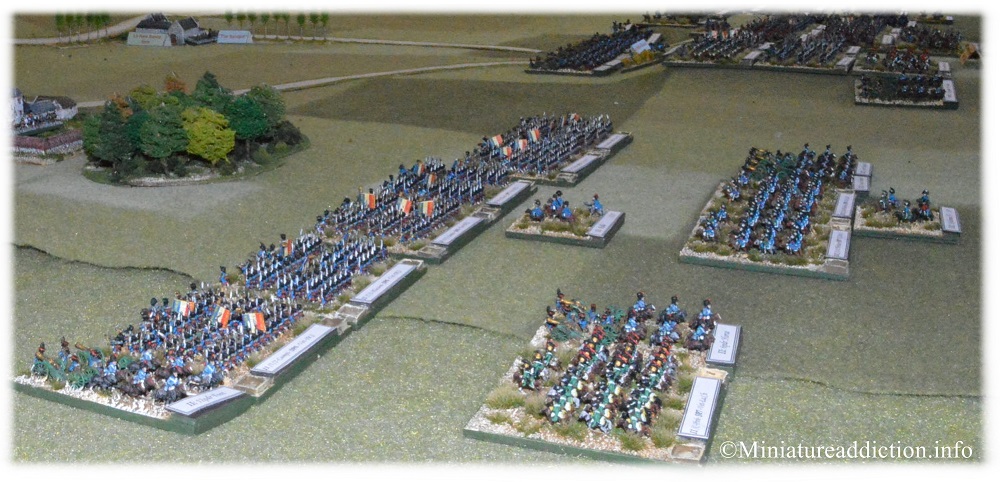
Introduction
Like many other wargamers in 2015 the lads at the local club decided to commemorate the two hundredth anniversary of Waterloo by re-fighting the battle using 6mm figures. Pooling our resources we managed assemble all the troops required to represent the three armies that took part in the action on the day. The results of our efforts can be found by clicking the following link Waterloo AAR. This page however, is dedicated to the troops from my personal collection and is intended to be an updated look at my 1815 French army which I re-based for the occasion. I have also included some photos of the terrain along with a limited number of Allied units I managed to paint up for the game.
Army level Rules
Wargame rules are a bit like movies in that there is a large amount of choice out there and what one person may find entertaining another will undoubtedly be less impressed with. It is not my intention here (or anywhere else on this web site) to promote one set of rules over another, merely to touch on the rules I currently use and how they relate to the miniatures pictured below. For me Sam Mustafa’s set of “Grande Armée” rules (pictured right) have a few appealing aspects about them. In particular, I like the big bases which not only look great, but also simplify the movement of large amounts of lead around the table top. The core mechanics which limit the amount of command chits you receive also randomizes the number of phases within each turn, this presents you with an interesting set of challenges throughout the game.

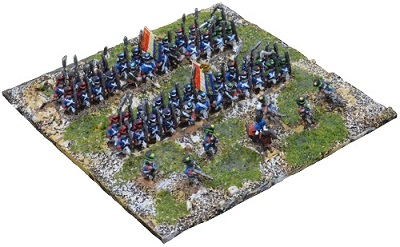
Updated
Basing
◄ Old
New ►
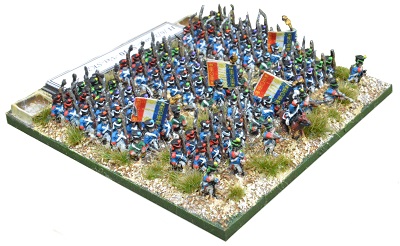
As some will already know I covered the whys and wherefores of re-basing my French army in detail on the Waterloo AAR page. For those of you that weren’t aware, this basically involved adding label and casualty dice holders on the rear of each element. This did away with the need for army roster sheets. I also added thicker bases which helps limit damage to the miniatures as they are moved about the table.

Napoleon’s Grande Armée at Waterloo
Pictured below are the respective infantry, reserve cavalry and guard corps which together formed the Grande Armée on June the 18th 1815. Each of the infantry stands shown here represents anywhere between seventeen hundred to four thousand men and is classified as a brigade. At this scale French cavalry formations are combined into single divisional sized elements of various strengths. Horse, heavy foot and reserve artillery batteries are present on the table top while divisional foot batteries are factored into the infantry brigades in the form of extra strength points..
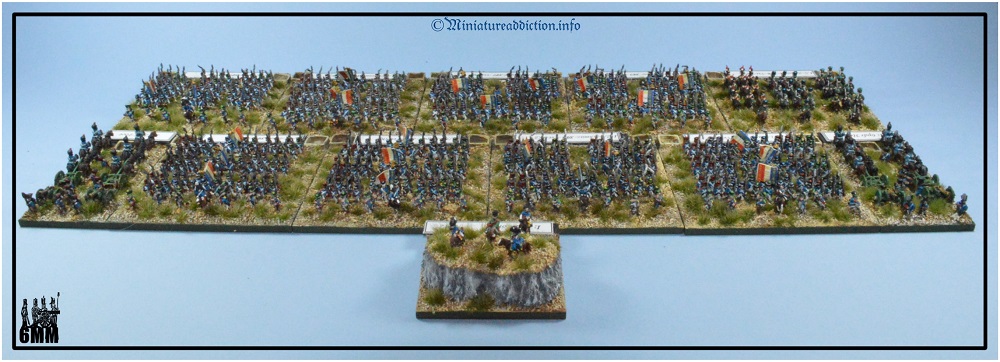
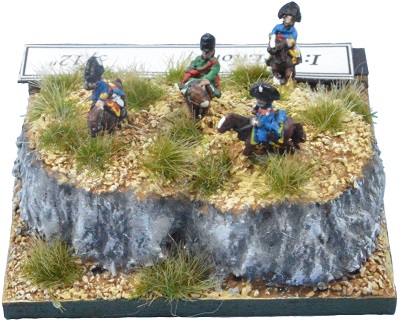
G de D Comte d’Erlon: I Army Corps
Close to seven hundred 6mm figures were used to recreate the twenty thousand troops in d’Erlon’s first army Corps. His four infantry divisions (1st,2nd,3rd and 4th), artillery and single light cavalry (1st) division are represented here by one divisional cavalry base and eight infantry brigade stands. Captain Bourgeois’s horse guns a long with the Corps twelve pounders are also represented in the picture above.
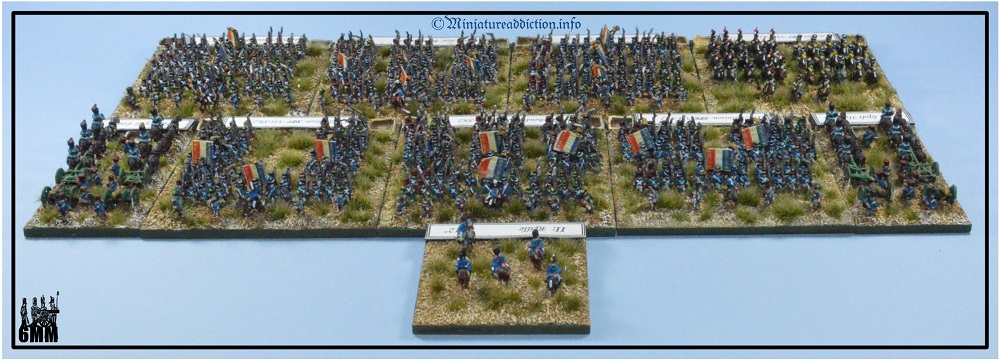
G de D Comte Reille: II Army Corps
Although this Corps contained one less infantry division than d”Erlon’s, it was never-the-less still equal in terms of numbers to the 1st Corps. To represent the larger brigades present in this formation (like those within Jérôme’s 6th division) I have added extra figures to some of the bases. Pictured above are the six infantry brigades, light cavalry division, horse guns and a single heavy artillery battery that were under Reille’s command at Waterloo. A total of around 680 figures in all was required to complete these fighting formations.
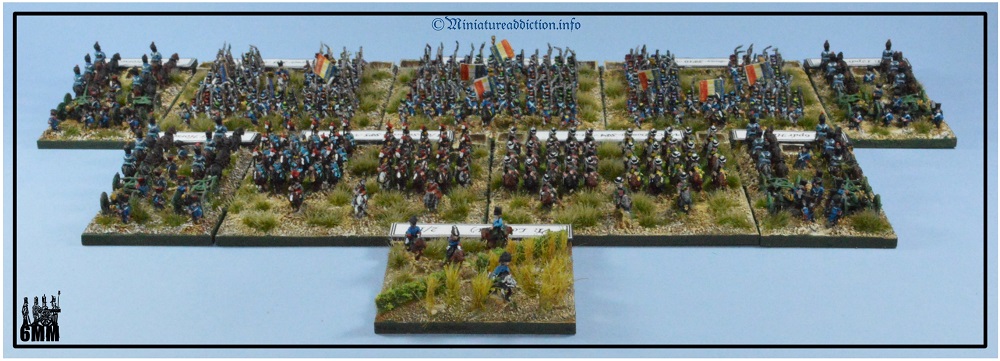
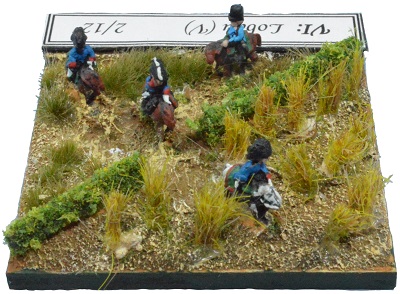
G de D Comte Lobau: VI Army Corps
At half the size of the previous two formations this interesting little Corps contained two small cavalry divisions, the first of which was attached from the 3rd Army Corps while the latter came from the first reserve cavalry Corps. Infantry wise the 47th Ligne regiment was detached to the Army of Loire leaving the 20th division with one brigade well under half strength. Pictured here are the 3rd and 5th divisional cavalry stands, two infantry brigade stands for the 19th division and one further stand representing the under strength 20th division. Three horse batteries, one of which was a divisional asset and one heavy foot battery (also a divisional asset) are also depicted here.
Comte Drouot: Old, Middle & Young Guard Infantry Divisions
Although various elements of the guard were grouped as needed to meet the changing tactical situations at Waterloo for gaming/basing purposes the three divisions are divided into six brigades. Two of young guard and one each of Grenadiers à Pied and Châsseurs à Pied for both the old and middle guard. With each of these six brigade stands containing between 77 and 79 figures, this section of Napoleon’s guard took around 480 figures to complete.
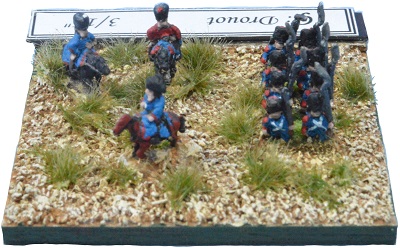
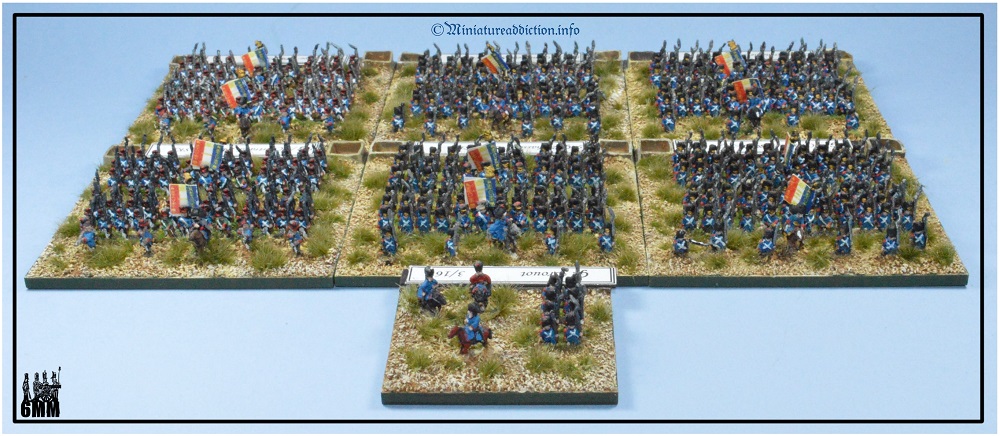
The following diagrams detail how I set out infantry stands in my French army.
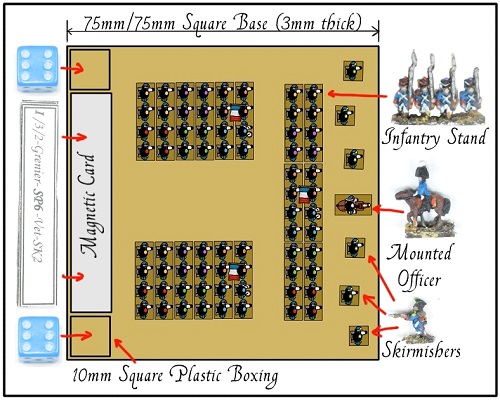
When basing standard sized infantry brigades, illustrations one, two and above were used. All six guard brigades were as per diagram three, while the set out four was reserved for larger brigades like those in the 2nd Corps.
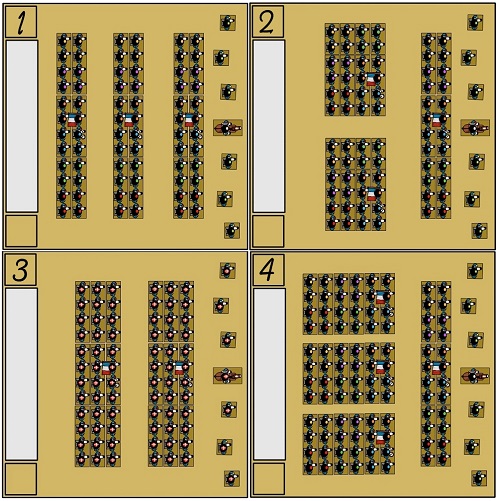
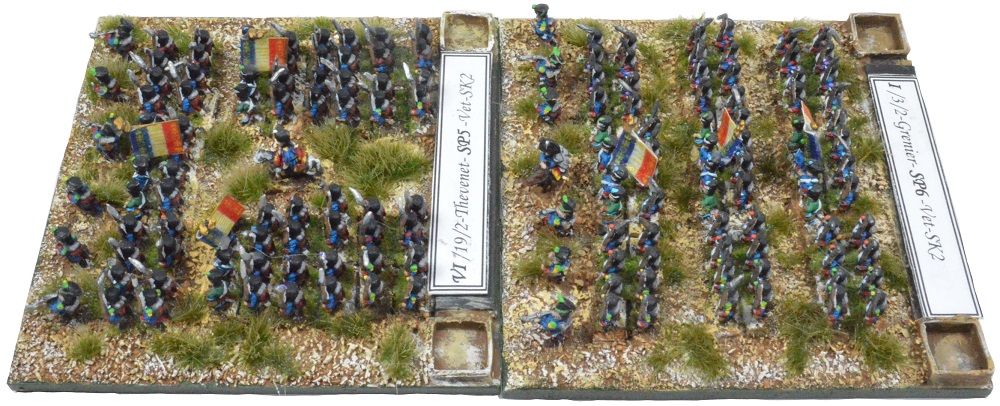
Napoleon: Guard cavalry and Reserve artillery
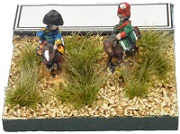 Left is a small 25/25mm base representing one of the three aides-de-camps available to the Grande armée. To the right is a closer look at the large army command base containing Napoleon and his staff. Pictured below are eight stands of guard artillery, four horse, three heavy and one foot battery in all. Due to its large nature I have split the guard light cavalry division in half with one stand containing the Chasseurs à Chavel while a second stand was used to represent the Chevaux-Légers Lanciers (Red Lancers). Both the l’Emperatrice Dragoons, Grenadiers à Cheval and Gendarmes d’Élite are together in a single heavy cavalry base.
Left is a small 25/25mm base representing one of the three aides-de-camps available to the Grande armée. To the right is a closer look at the large army command base containing Napoleon and his staff. Pictured below are eight stands of guard artillery, four horse, three heavy and one foot battery in all. Due to its large nature I have split the guard light cavalry division in half with one stand containing the Chasseurs à Chavel while a second stand was used to represent the Chevaux-Légers Lanciers (Red Lancers). Both the l’Emperatrice Dragoons, Grenadiers à Cheval and Gendarmes d’Élite are together in a single heavy cavalry base.
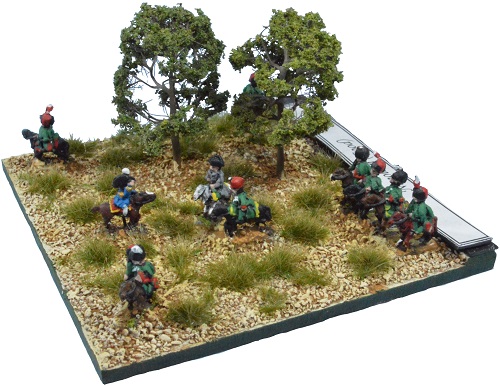
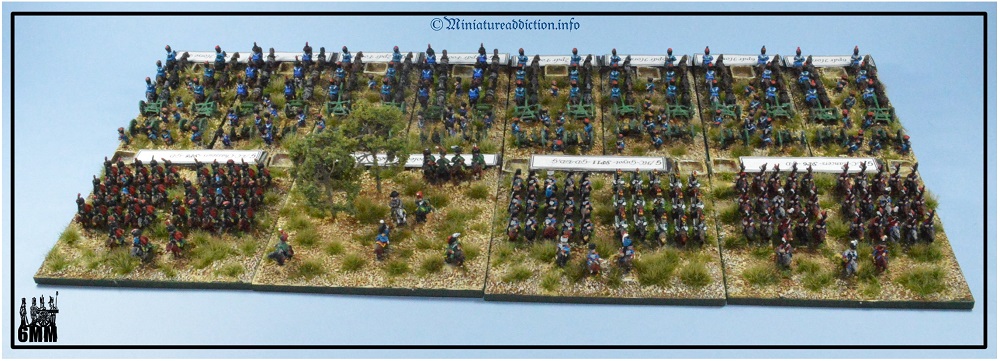
Pictured below are two stands of Imperial Guard light cavalry
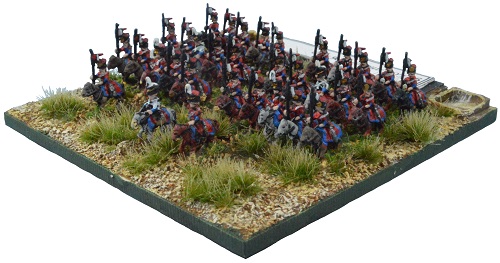
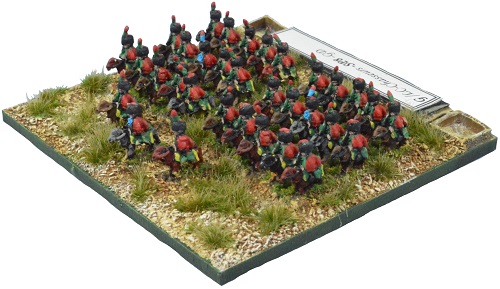
G de D Kellerman: III Reserve Cavalry Corps
A combination of Dragoons, Cuirassiers and Carabiniers make up the thirty six hundred troopers in Kellerman’s two heavy cavalry divisions which are pictured here (below) with their two accompanying horse batteries.
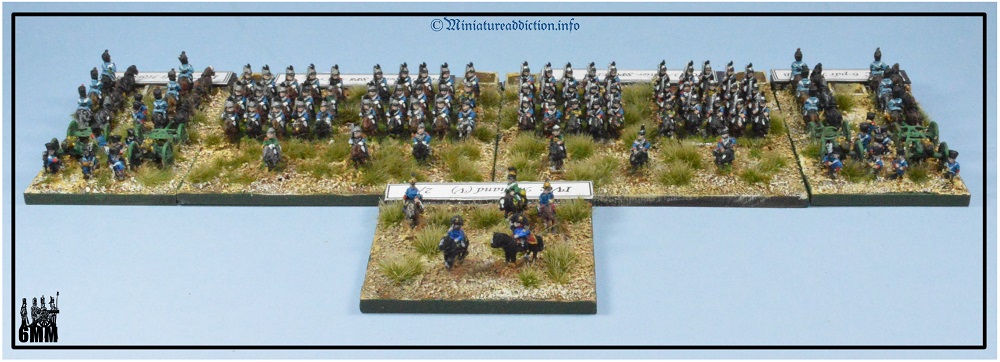
G de D Comte Milhaud: IV Reserve Cavalry Corps
Smaller than Kellerman’s Corps the three thousand one hundred troopers that comprised both the thirteen and fourteen heavy cavalry divisions under Milhaud’s command were all Cuirassiers. Although their base stats will reflect their different force compositions they are represented on the table top with the same number of stands as the third Reserve Cavalry Corps, which is pictured above.
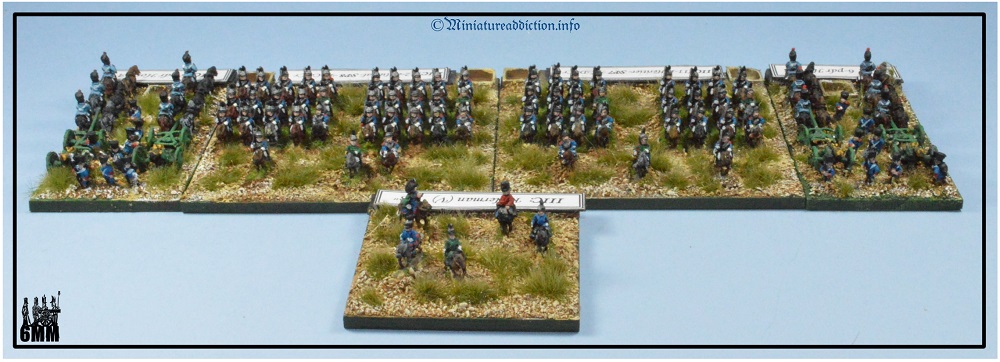
Figure Totals and Order of Battle.
All up this force is composed of twenty three infantry brigades containing around eighteen hundred models, three hundred and sixty mounted figures were required to finish the eleven cavalry stands while forty gun and limber teams completed the artillery arm of this Grande Armée. All figures shown here are from the Baccus miniatures range which I found surprisingly quick and easy to paint (just as well because there was a lot of them). The order of battle PDFs linked here offer a slightly different take on the scenario lists supplied in the rule book. They are products of my own personal ideas and limited research and have been included here only as points of interest. I am by no means an authority on the hundred days campaign so don’t be surprised if you don’t agree with my OoB.
